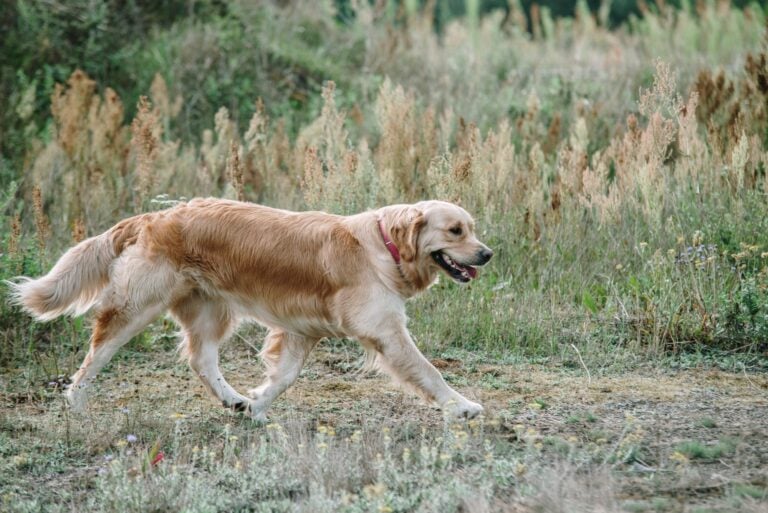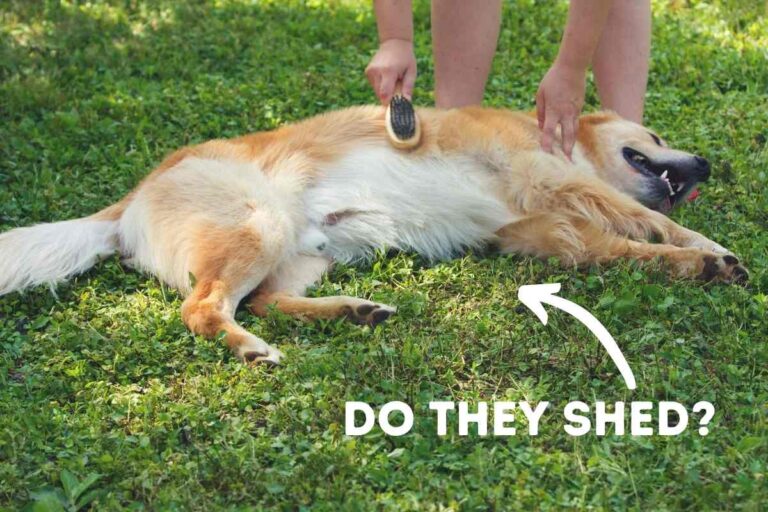When Should Golden Retrievers Be Spayed?
I always knew that spaying pets is an important part of ownership, but realizing just how essential it is made me proud of having my Golden Retriever, Cody, neutered when he was younger. The health benefits for them are beyond reason to take them to be spayed or neutered.
When Should Golden Retrievers Be Spayed?
The prime age to spay your Golden Retriever is 7-8 months of age, ideally before the female puppies’ first heat cycle. Doing it at this age helps prevent a lot of health issues and will keep your pup happy and healthy!
The difference between spay and neuter
The short answer is female dogs get spayed and male dogs get neutered, but each procedure is different. Spaying and neutering refers to the surgical sterilization of the animal.
When a female dog is spayed, their uterus and ovaries are removed. This involves putting the dog under anesthesia, making an incision in the abdomen, removing the organs, and closing incision site. Doing this will prevent the dog from getting pregnant and having heat cycles. This surgery is more invasive than the male neutering procedure due to the reproductive organs being internal rather than external.
Male dogs get the ‘big snip’, where they are put under anesthesia, an incision is made in front of the scrotum, the stalks attached to the testicles are cut and tied off, the testicles are removed, and the area is sewn back together.
Benefits of spaying/neutering
There are tons of health benefits when it comes to fixing your pet; Not to mention the added benefits that come along with the procedure.
Benefits for spaying your female dog include:
- Decreasing the risk of uterine infections and breast tumors
- Female dogs will not go into a heat cycle which causes vaginal bleeding and increased hormone production
- Having a litter does not calm female dogs down; That is a common myth that has been proven false in numerous studies
- Prevents the possibility false pregnancies that cause stress, confusion, and possible health problems
- Prevents pyometra, an infection of the uterus that often results in sepsis and death
Benefits for neutering your male dog include:
- Male dogs will not produce as much testosterone
- Decreased risk of escaping the home environment in order to find a mate
- Spraying and marking territory will decrease significantly
- Prevents testicular cancer and some prostate problems that could be extremely dangerous to treat
- Often calms down male dogs due to less testosterone being produced
- Male dogs will be less likely to mount other dogs (or your leg), but it may not stop it entirely; This can be corrected through training
- Less likely to get into territorial fights with other male dogs
Although your pet’s health and wellbeing are of the upmost importance when it comes to making medical decisions, there are benefits for the owner, as well. Some of these benefits include not having to have diapers on female dogs during their heat cycle, no risk of an accidental litter and the costs associated, male dogs are less likely to mount other dogs while at the park and will be less prone to running away looking for female dogs in heat.
Fixing pets is a great way to prevent over-population of animals, including those at the pounds and shelters that are looking for their forever home.
After care for your pup
It is very important to keep the procedure site clean and the dog as calm as possible post-operation. Breaking the stitches or having a dirty incision area can lead to more issues that result in another vet visit and additional stress for both the dog and the owner.
The dog should be given a quiet and comfortable place indoors to recover, preferably away from other pets. This will keep them in a calm state and eliminates the possibility of getting hurt while playing with their friends. The pup should also not be given a full bath for 7-10 days after surgery. The soap and water from the bath can irritate the incision site and cause post-operation complications. The full recovery period, if done properly, should take about two weeks before the dog is able to run and play as normal.
Ensure that the incision site is checked twice a day and after any big movements are made. Catching a tear early could be the difference between an emergency and a quick return visit to correct it. Signs you can look for that can show your pup is not feeling well include loss of appetite, vomiting, diarrhea, labored breathing, and bleeding from the incision site. Red and swollen incision sites or yellow-to-white drainage from the abdomen after a few days post-operation can also indicate an infection occurring at the surgery site. This will also need to be treated by a veterinarian and additional medication.
Need tips on how to calm a golden puppy? See here for recommendations on calming down your pup.
The cone of shame , though funny and sometimes uncomfortable, is extremely important protection for the ideal recovery of your pup. There are alternatives to the traditional hard plastics cone, that you may find more beneficial or comfortable for your Golden.
Pet sites, such as Chewy, have inflatable cones like this one or a soft cone like this one.
As long as the dog cannot reach the incision site to lick or scratch, they will be more likely to keep their stiches in-tack and clean.

Downsides of the procedure
Every argument has its downsides, and this topic is no different. Below are some of the common downsides of spaying or neutering a dog:
- Dogs that are older in age have a higher chance of complications both during surgery and in recovery
- Putting an animal under anesthesia is always a risk and some dogs could be at an increased risk of an unknown reaction to the medications used during the surgery and after the surgery to aid in recovery
- The cost of surgery can range from 50-350 USDs depending on the age and health status of your pet
- Infections are a risk post-op, internally and externally
- A new owner may have wanted to breed the dog
- Poor after surgery care can lead to a tear at the incision site and possible infection that may require further medical attention
- Some sutures require a return visit to remove them if dissolvable sutures were not used
These risks can be mitigated by using a trusted veterinarian and following proper aftercare procedures. The positive aspects of the procedure far outweigh the negative benefits of having a dog spayed or neutered.
Learn more
As always, prefer to your trusted veterinarian and always follow their pre- and post-care for your Golden Retriever. Keeping your pup as healthy and happy as they can be should be the number one priority for pet owners, and that includes having them spayed or neutered.
See what the ASPCA says on fixing dogs and the aftercare associated.
Have puppy questions? Check out our puppy handbook here to get the best head start on owning your pup!
Make sure you ask your vet any questions or concerns about the procedure and have clear instructions for post-op care! A great tip is to have the warning signs to watch for and the vet’s office number hanging on the fridge for the whole family to see and for quick access in case of any further questions that arise after the operation or in case of an emergency.






![How Many Litters Can A Golden Retriever Have? [Safely] 7 How Many Litters Can A Golden Retriever Have? [Safely]](https://retrieveradvice.com/wp-content/uploads/2022/05/How-Many-Litters-Can-A-Golden-Retriever-Have-768x512.jpg)